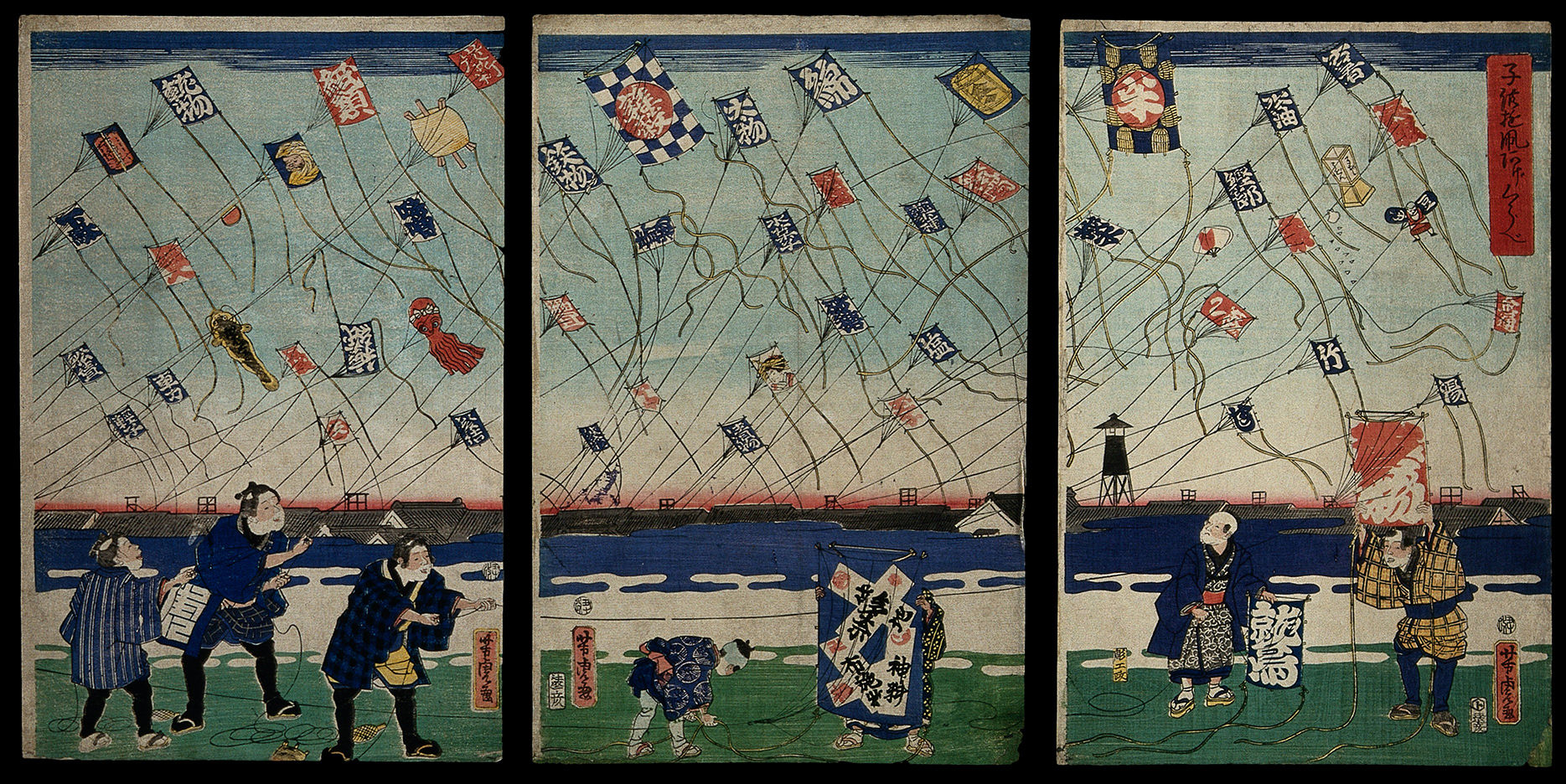
Kites were invented in China about 2,000 years ago. Unlike the rest of the world, China had all the right materials for building a kite. It had silk, which is a fabric made from the thread of the silkworm. Silk is very strong and very light. China also made paper from wood pulp. At that time, most of the world used parchment, which is dried and stretched animal skin. China also had bamboo. Bamboo is actually a type of grass. It grows very tall and gets very hard. It is very light and hollow inside. It can be used like wood. All of these materials are perfect for making a kite. The silk could be twisted into string for kite string. Silk fabric could be used to make the body of the kite. Paper could also be used to make the body of the kite. Bamboo was light and strong enough to make a kite frame.
As kite popularity spread, people began to use kites for many things. People flew kites for fun. But they also used them for more serious purposes.
The earliest recorded use of a kite in China was in the year 549. A paper kite was used to send a message during a rescue mission. Later, armies used kites to measure distances or send messages over short distances. Even later, people would use kites for scientific experiments. And then there were those who used kites in competitions.
As kites became popular in China, their popularity spread to other countries. The joy of kite flying spread to India. There, kite flying became a sport known as kite fighting. The sport of kite fighting spread to countries near India. Kite fighting became—and continues to be—very popular in countries like Pakistan and Afghanistan.
In kite fighting, players use special string called manja. The string is covered in glue and coated with powdered glass. The string is very sharp and you have to use special gloves to protect your fingers from it. Usually, many kite fighters play at one time. They all fly their kites in the sky. To win, you need to wrap your kite’s string around your opponent’s and pull. By pulling, the sharp string cuts through your opponent’s string. This sets his or her kite free. The last player with a kite in the air is the winner. When kites are cut loose, kite runners run to catch the freed kites just before they land.
By the 1500s, kites even appeared in Europe. They became a popular toy for children. Kite popularity spread further west. Adults began to use kites for scientific experiments. In 1749, Alexander Wilson attached a thermometer to a kite. He used it to measure the air temperature at 3,000 feet. Benjamin Franklin flew a kite during a lightning storm to prove that lightning was made of electricity. The Wright brothers used kites to do research when they were developing the first airplane. In the 1950s, NASA began to use kites to help with space exploration.
Today, kites come in all shapes and sizes. Some have one string. Some have two or more strings. Some have tails. Some are box-shaped. Some kites became so big that they could be used to fly people—these are called hang gliders. Scientists continue to use kites to test weather and climate patterns. Children continue to enjoy flying kites for fun all over the world. Major kite-fighting festivals are still fought across India and its neighbors. But some of the most beautiful kites can only be found in China—where kite flying first began.



 About BeeLine
About BeeLine